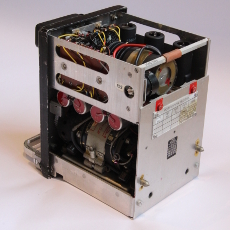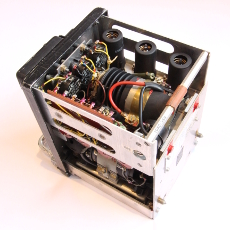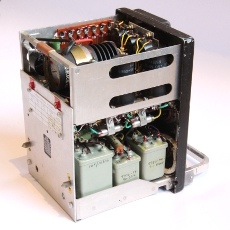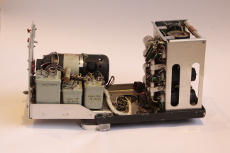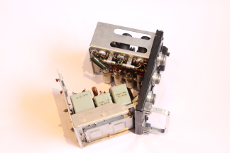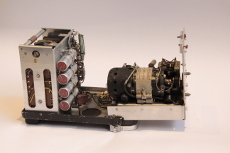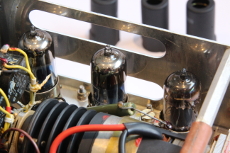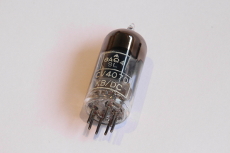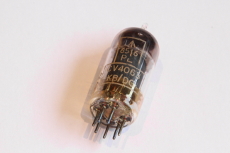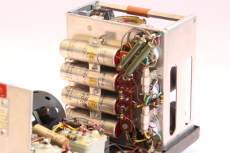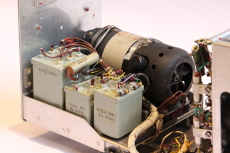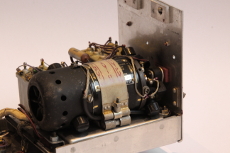Type A1961
Intercom Amplifier
The older, valve based version of the A1961M intercom amplifier. These two amplifier types share the same enclosure and connections, and are directly swappable.
Used in multi-crew aircraft of the Cold-War era, such as Lightning T5, Vulcan and Canberra, etc..
Microphone Input
It is designed for use with Dynamic (moving coil) microphones.
There can be several microphones connected in parallel, or via a mixing circuit.
In the RAF and RN since the 1950's, there have been two versions of dynamic oxygen mask microphone, several boom microphones, and a throat microphone (Laryngophone) that are compatible.
Looking at the circuit diagram, it appears as though it will not be able to support Carbon or Electret microphones, which require a phantom voltage to operate.
Radio Input
The amplifier offers two additional inputs so that the outputs of two radio sets can be mixed with the crew microphones.
This configuration usually uses a JB-154 junction box, as it allows the aircrew to switch the amplifier out of circuit upon a failure, giving standby intercom via the radio T/R Unit. JB-154 also upon transmitting disconnects all microphones but the pilots' from the radio, keeping transmissions clear.
Headphone Output
It will deliver 1Watt into 10 standard UK NATO headsets / helmets connected in parallel - these are 150 ohm headsets.
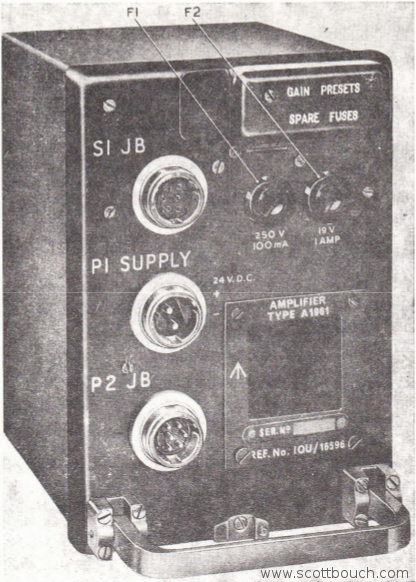
The amplifier's optimum performance is 0.5W into a 30 ohm load of 5 headsets / helmets, this results in a frequency response within 3dB between 300Hz and 5kHz.
Detailed photos
This amplifier is dated 1963, Serial No: 9668. It's complete, and in almost-new condition, but has an unservicable tag from Sealand. I plan to repair it when I can find a set of Plessey Mk4 connectors to wire it up.
Many thanks to WRMR Ltd for sourcing this amplifier.
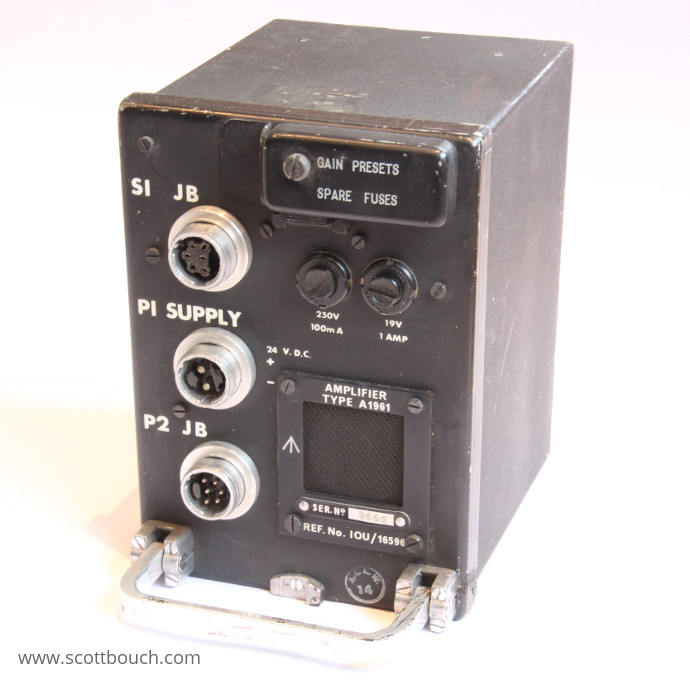
The amplifier valves can be seen at the top, next to the carbon pile regulator, while the dynamotor / rotary transformer is at the bottom, next to the power relay and transformers:
Note: hover your mouse pointer over the image for a brief description
The bottom hinges open to allow easier access to components:
The three valves are held in place by spring loaded sleeves, these have been removed to show the CV4070 and CV4163 thermionic valves:
Some more detail of the components:
Circuit Diagram
The input stage allows the outputs of two UHF / VHF radio receivers (or other devices such as navigation / warning equipment) to be mixed with the crew microphone signals.
This mixed signal is fed into a thermionic valve amplifier. The valve amplifier consists of a two stage valve voltage amplifier, followed by a single valve power amplifier.
The required anode voltage of 250Vdc is generated by a rotary dynamotor / generator / rotary transformer type 103.
The valves heaters are powered by 19Vdc from the Type 40 carbon-pile regulator.
Power is switched on by an external remote on/off switch, which energises RLP. RLP's two contacts are wired in series, I don't know the reason for this, but assume it may be to double the contact voltage rating due to back-EMF from the dynamotor... if anyone can confirm, please get in touch!
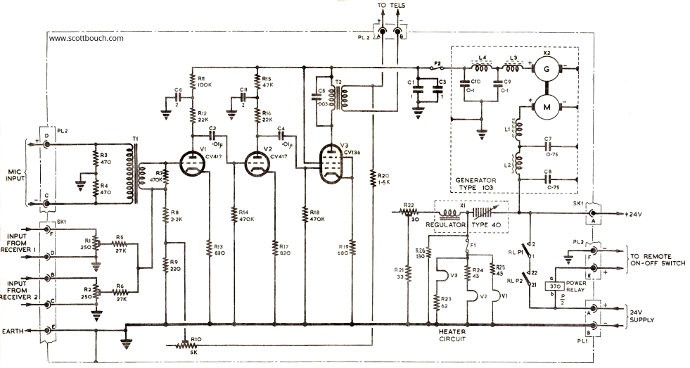
Installation
Image of an A1961 Amplifier installed in a Canberra B2 cockpit. Note, the handle is sprung, and should be retained by the securing screw fitting in the centre.
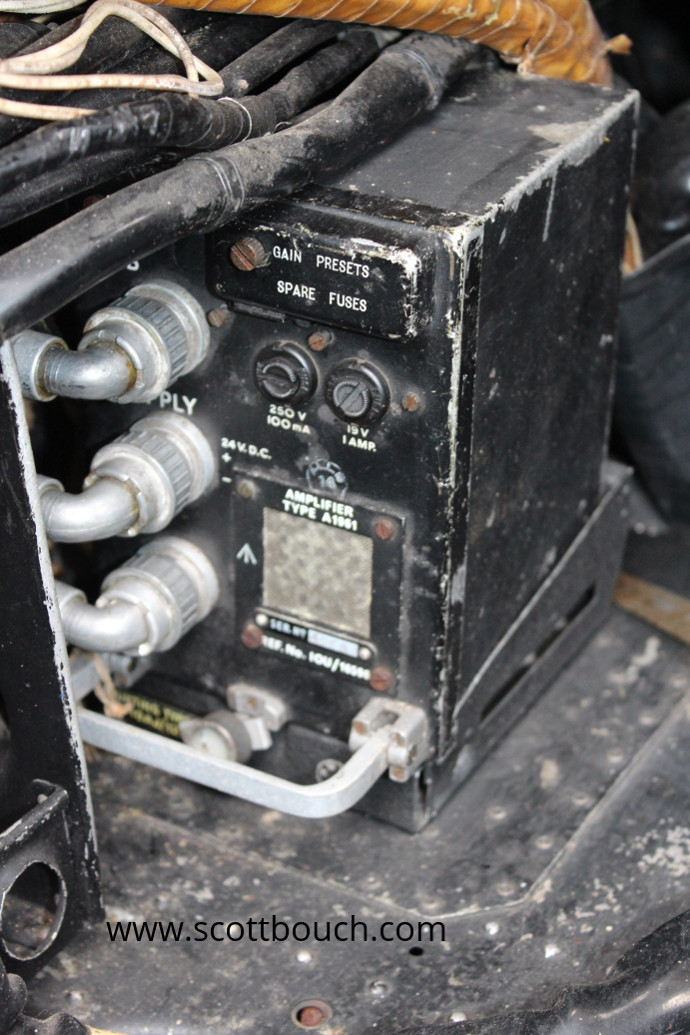
Power Supply
The amplifier drawings, and label on the amplifier, state 24Vdc supply, but most aircraft supplies are 28Vdc. This is evident in the Lightning T5 wiring diagrams:
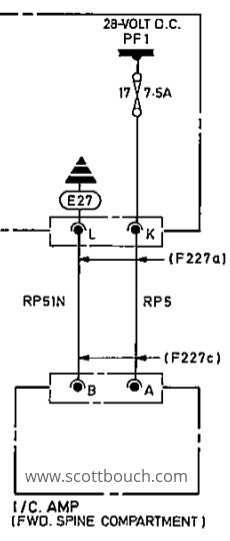
Notes
The valves noted in the circuit diagram are different types to what was found in the amplifier above. Assumed to be compatible exchange parts.
REF. No 10U/16596 | Manuals: A.P.2876E, Vol.1 or A.P.116N-0105-1 | Also referred to as A.1961
Wanted
Having acquired one of these, I'm now looking for a set of Plessey Mk4 plugs to fire it up - if you have any available, please do get in touch, thanks.
